How to chart and optimize your sales territory mapping | Gong
The value of sales territories isn’t lost on most sales leaders (and if it is, we’ll clarify that shortly). The problem is making your sales territory planning fair without swallowing up your time.
If you’re fed up with reps moaning about the size or value of their territories, then it’s time to think carefully about your sales territory mapping strategy. Bear in mind that it’s not just how you create territories in the first place; it’s also about how you optimize your mapping over time to hit higher sales.
In this article, we’ll explain why sales territory mapping is so important to get right, how to create a sales territory map if you don’t have one already, and how to optimize your territory plan.
What is sales territory mapping, and why is it important?
Sales territory mapping is the process of defining the areas of your target market that sales reps are responsible for growing.
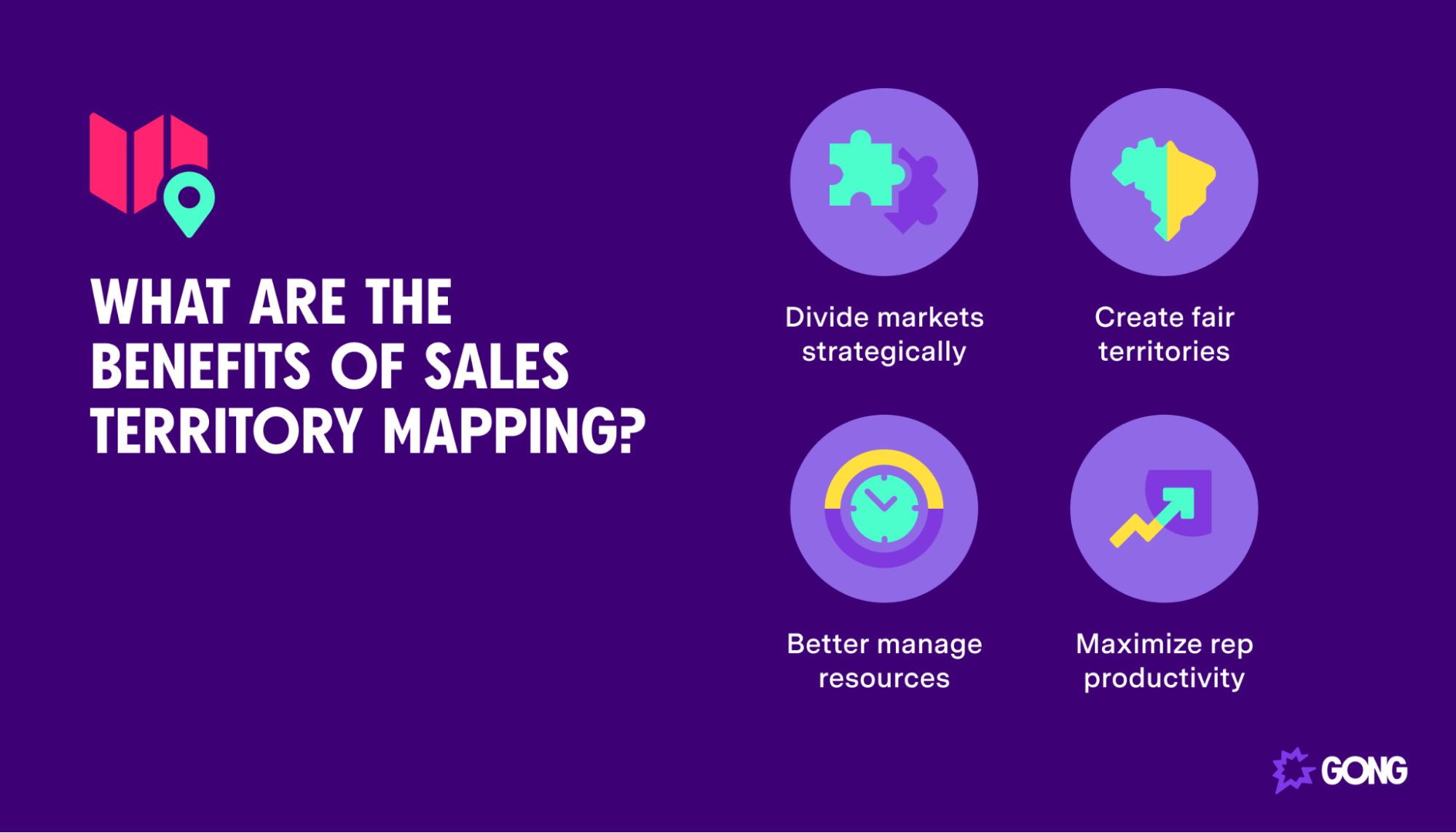
While only some sales organizations create sales territories, there are plenty of reasons to do so.
Divide markets strategically
In an ideal world, sales managers would assign each account to the most suitable rep. If someone has financial experience, they’d be on every financial deal. If someone specializes in enterprise sales, they’d be on every enterprise account.
This never happens when accounts are assigned randomly, but it’s almost a given with sales territory mapping. After all, you choose how your market is divided, and you choose which reps to assign to each territory. So everyone has the same sales potential.
Create fair territories
It’s hard to give all of your reps the same bite of the apple. But a well-defined and executed sales territory mapping strategy should create fair territories that everyone is happy with.
By creating fair territories, you’ll also increase the effectiveness of all your reps, boost team morale, and maximize the number of opportunities your team generates.
Better manage resources
You only have so many reps on your sales team, and those reps only have so many hours in the day. Effective territory mapping ensures that you divide your total addressable market into customer segments to maximize resource allocation.
Every rep gets a similar-sized market and enough opportunities to keep them busy without getting overwhelmed.
Maximize rep productivity
Sales territories can seriously boost sales productivity by letting sales focus on accounts near or related to each other. This makes it a lot easier to batch tasks like research since many companies share characteristics.
It can also improve the sales routes of your outside sales team. If you’re mapping sales territories by geographic area (by ZIP codes), your field sales team will save a lot of travel time thanks to efficient route planning.
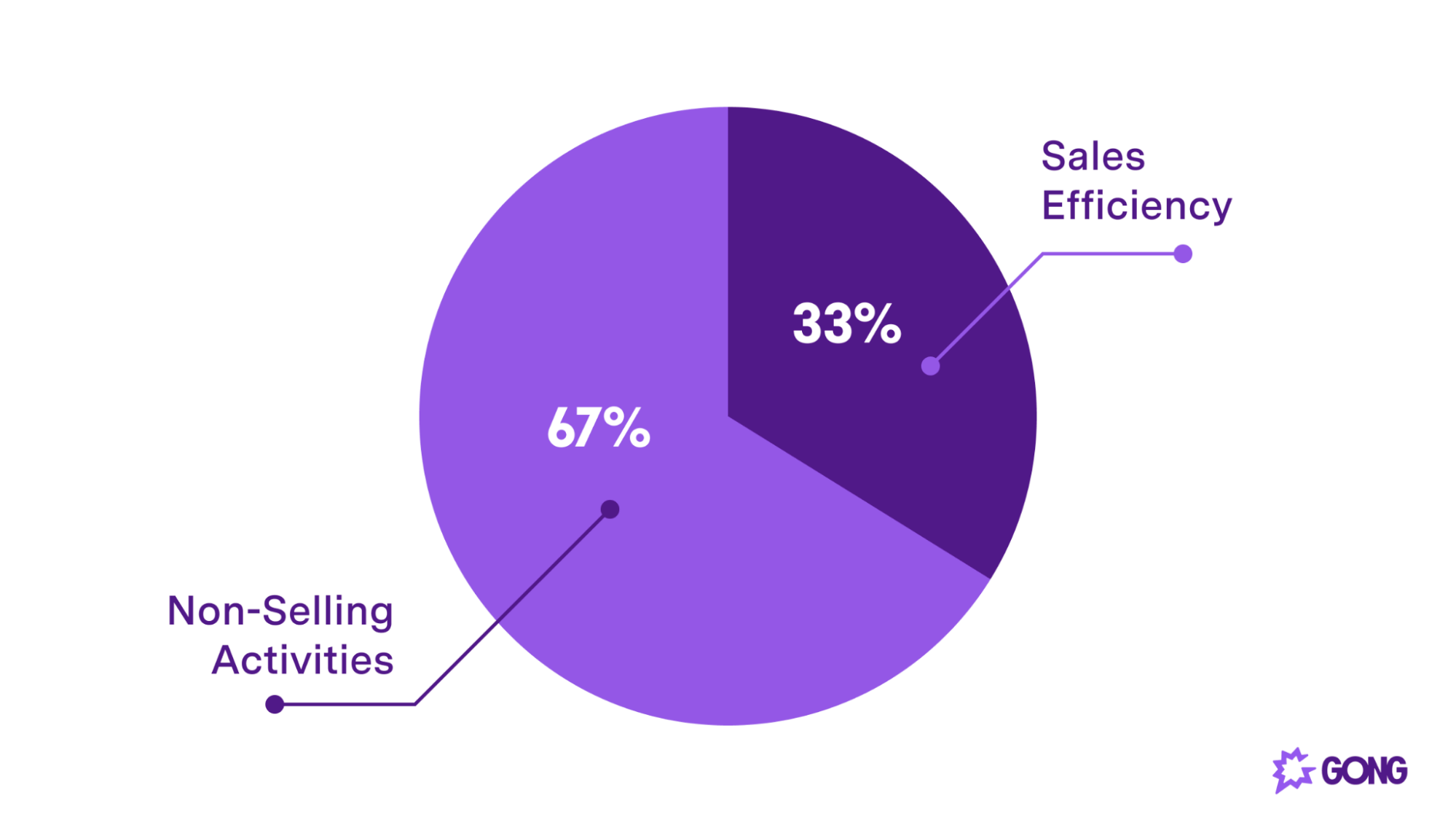
The importance of this can’t be overstated, especially given the time-consuming nature of sales where reps spend around two-thirds of their time on non-selling activities.
How to map sales territories effectively
Follow these step-by-step instructions if you have yet to create sales territory maps.
Define your sales goals
What are you trying to achieve with sales territory mapping?
Start your sales territory mapping process by setting clear goals. Think about the company goals you want to accomplish in not only the short term but also the long term.
Will your sales territory goals be suitable in a year when the company has grown? Or are you going to have to redo all your hard work?
Common goals include:
- Growing market share in a particular region
- Launching a new product
- Increasing sales
Once you know your goals, you can create sales territories that align with them.
At the same time, create sales targets to track your performance. These could be revenue-based (the pipeline value of each market, the value of closed deals, etc.) or activity-based (number of deals in your pipeline, number of meetings booked, etc.).
Understand your best buyers
While sales territory mapping is about dividing your target audience by one or more characteristics, you’ll still want to ensure that target accounts are worth your rep’s time. More often than not, that means making sure they look like your existing best buyers.
An ideal customer profile (ICP) is a quantitative breakdown of your top accounts by firmographic and demographic data signals. These signals are characteristics like the company’s industry, size, and revenue and you can find all of them in your CRM data. Creating one or more ICPs is the best way to ensure target accounts are worthwhile.
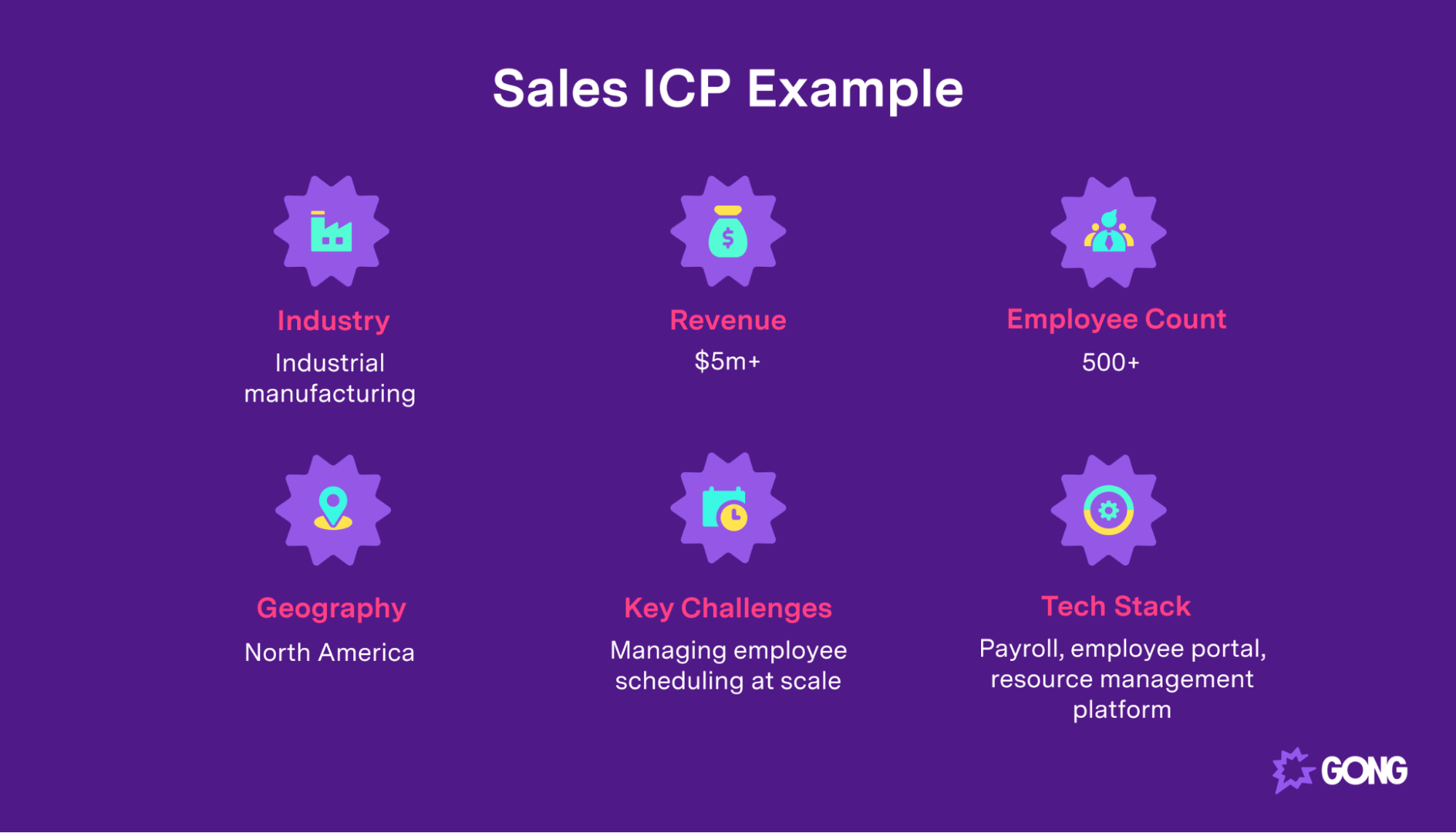
No matter the characteristic you ultimately use to create your sales territories, there will be dozens of different types of companies to target. By creating an ICP, you give your reps an even tighter brief, allowing them to ignore all of the other types of companies they could target in their area and focus on the ones that are expected to deliver the best long-term value for your company.
An ICP will also let your reps qualify accounts faster and sharpen their messaging so that it is almost certain to land with potential prospects. In short, reps can become even more effective and productive.
Involve your sales reps
Involve your sales reps at every stage of the process when creating sales territories. They will ultimately be responsible for selling into those markets, so you want them to be happy with how you create them.
In particular, it’s essential to play to your reps’ strengths and weaknesses.
Use a SWOT analysis to break down the strengths, weaknesses, opportunities, and threats of your reps and potential markets.
For instance, maybe one rep has a lot of experience with one industry but no experience in another. Or maybe there’s a significant competitor in one territory — the kind that requires an experienced sales rep to compete against.
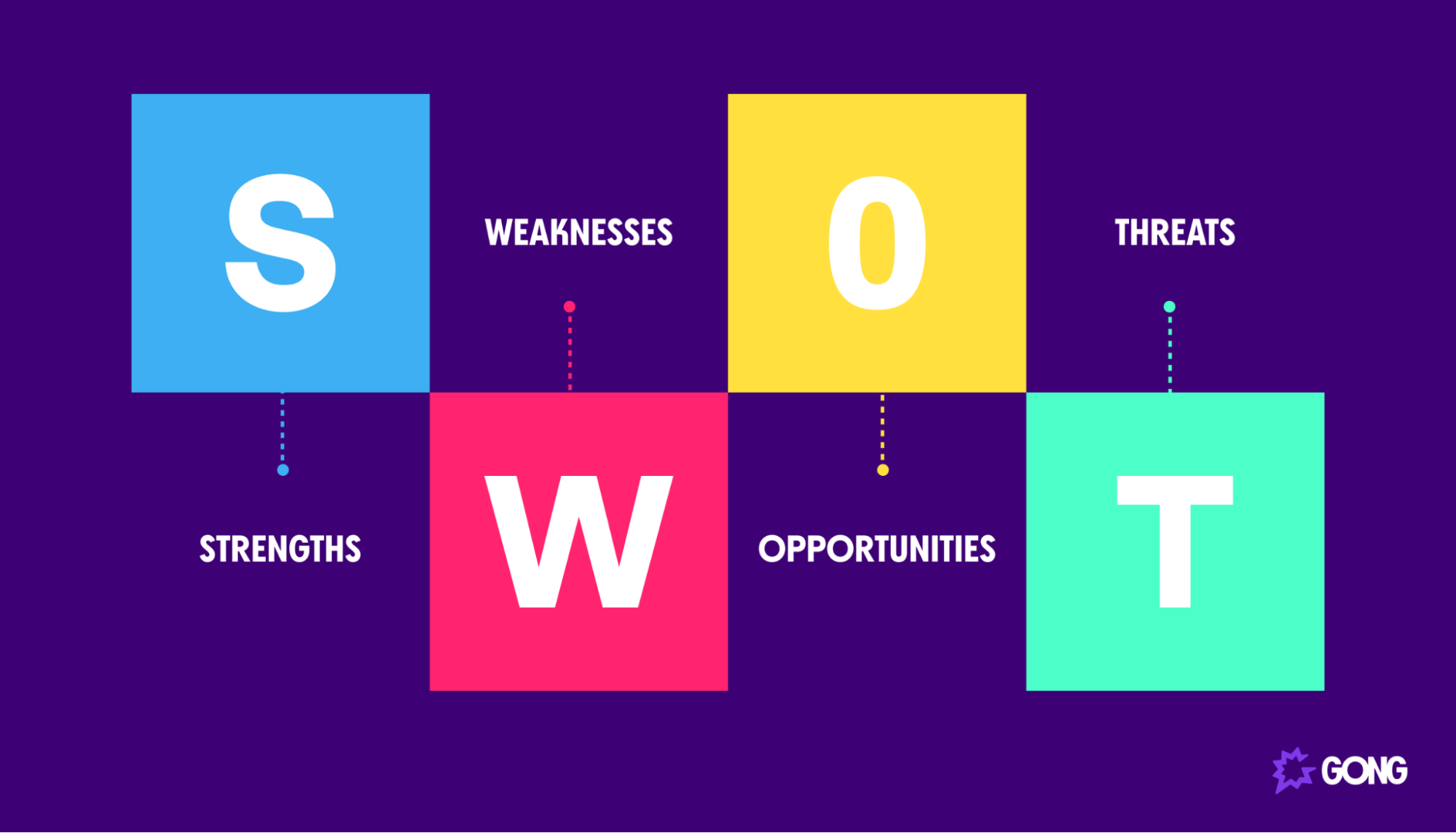
The better you understand your team, the easier it will be to assign new territories that align with your sales reps’ strengths.
For instance, you wouldn’t want to assign a sales rep to an international market if they don’t speak the local language. Similarly, you’d want to assign a particular industry to a sales rep if they’ve worked in that space before.
Create and assign sales territories
In the past, sales territories meant using geographic data to create physical territories — the areas of a map for which each field sales rep was responsible. This method doesn’t work for many B2B companies, especially ones that sell software to corporations primarily based on either the East or West Coast.
Instead, consider using one of the following characteristics for territory design:
- Area
- Product
- Buyer type
- Sales channel
- Deal value
You may even want to use multiple characteristics to create territories if you are an enterprise company with a huge addressable market. For instance, you could create territories by region (North America, EMEA, Asia, etc.) and then divide each of those territories by buyer type.
Whichever method you choose, make sure that your territories are divided in a way that helps you achieve the goals you outlined at the start of this process.
Historically, sales reps have executed territory mapping using spreadsheets or physical maps. While both of these instruments are still common in some sales organizations, they are inefficient.
Today, it’s more common for sales teams to put aside their Salesforce CRM and use interactive sales territory mapping software to create and assign maps for sales territories.
Sales territory mapping doesn’t just make it easy for you to create balanced territories — you can also use sales territory mapping software to measure rep performance, generate insights, create sales reports, and prevent sales data from getting siloed.
Most sales territory mapping solutions come as standalone software platforms. Popular sales mapping tools include Maptive, Sales Badger, and Spotio. Maptive, for example, is powered by Google Maps and it offers free territory plan templates you can use.
How to optimize your sales territory maps
Periodic reviews are essential to keep your sales territory mapping fair and profitable. The last thing you want is for your sales representatives to start churning because they’re not getting the same commission opportunities as reps with better territories.
Analyze rep performance
Do you still have the right team members assigned to each territory? Is one salesperson struggling to handle a territory on their own?
These questions require you to track sales KPIs to analyze your reps’ performance and determine the success of your sales strategy.
You can use the KPIs listed below to gauge rep performance. Ideally, you want to see reps excel in ways they didn’t before you created the sales territories. In other words, you want to see them progress over time.
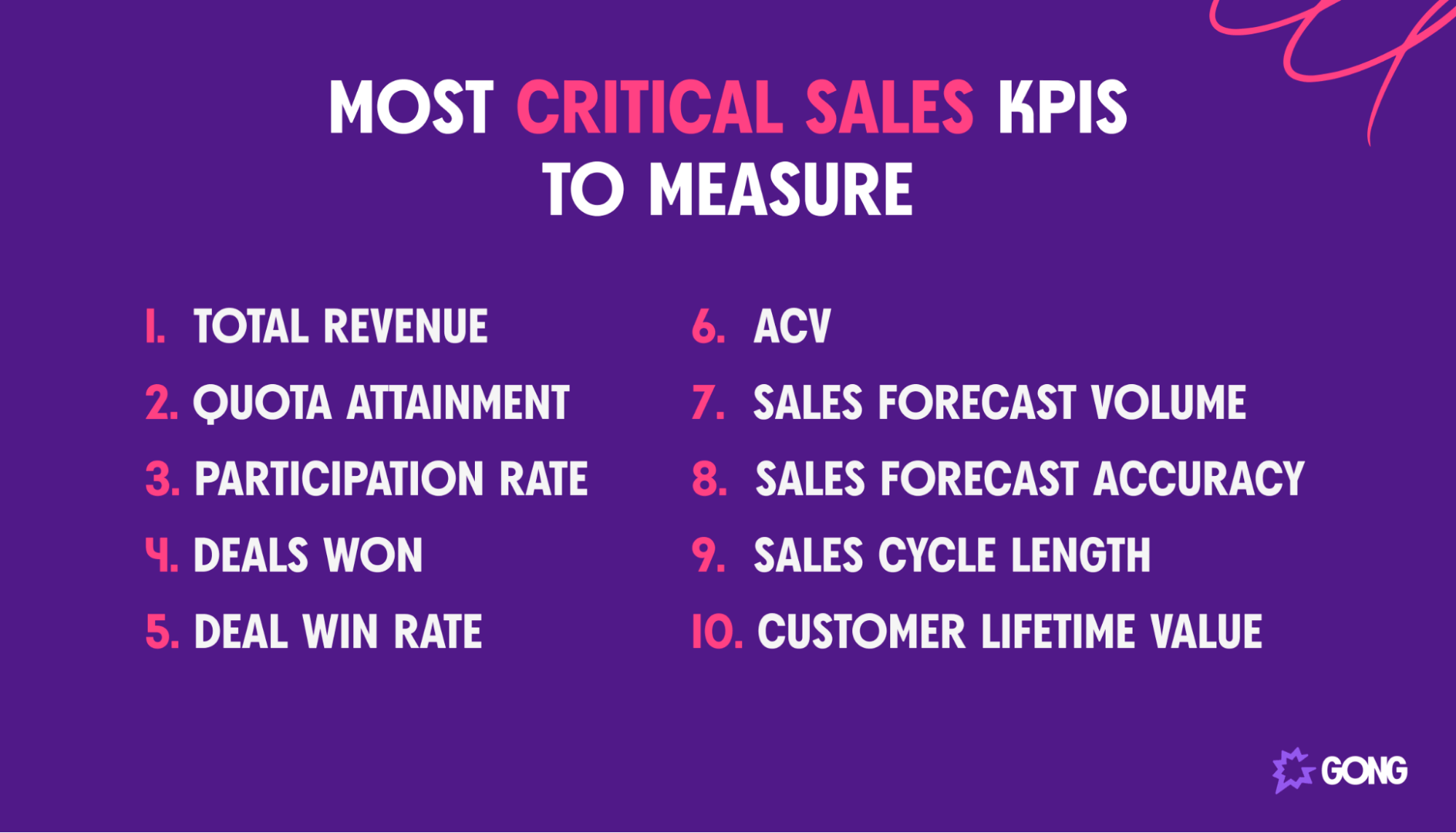
You’ll also want to review your team’s resources. Are sales reps in some markets overwhelmed while others struggle to meet their quotas?
As markets change and grow, you may be required to redistribute reps between markets, adjust the size of each territory, or simply hire more reps to continue to increase sales. You may even need to reassign a sales rep’s territories altogether.
Analyze market performance
Use current and historical data to track sales territories’ health. Ideally, you want each territory to produce the same caliber of accounts. However, if one market is consistently producing higher-value accounts, you may need to revise your existing territories accordingly.
Customer success KPIs are one of the best methods for analyzing the market performance of each territory.
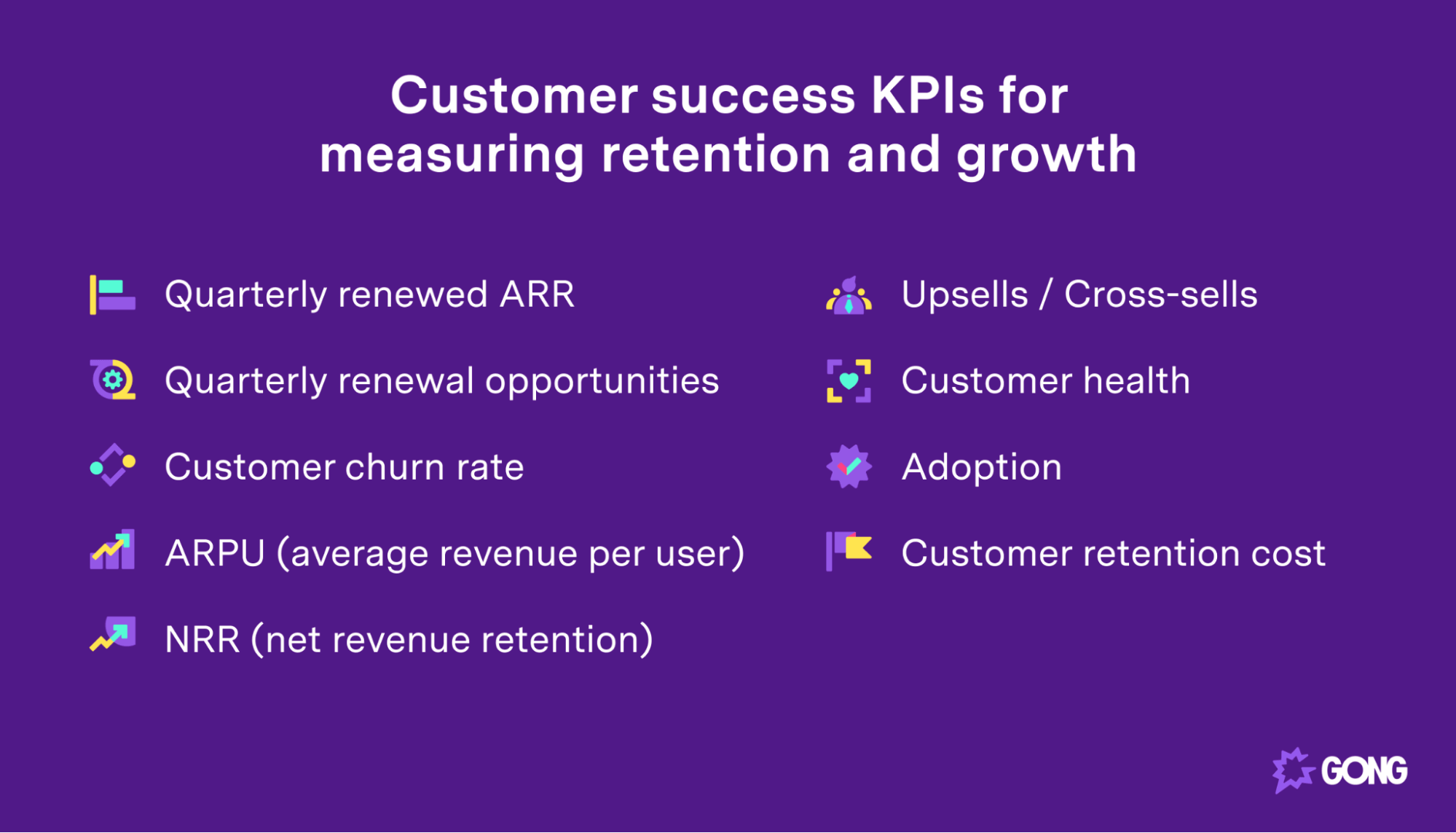
These are KPIs that analyze the quality of the accounts your reps close. For instance, a consistently high quarterly renewed ARR means buyers continue to use your product. High upsell and cross-sell rates mean there is an opportunity to grow accounts even if they’ve been closed.
You can track these metrics for your total sales pipeline, but the real value comes in measuring these KPIs in each sales territory. That way, you can see which territories outperform others and whether assigning more reps to high-value territories may be useful.
Forecast future sales
It’s not just current and historical data you should be using to optimize sales territories. Looking into your crystal ball and forecasting future sales is equally important.
Have territories changed in value? Are they likely to change in the future? Use sales forecasting to assess market potential when sales planning.
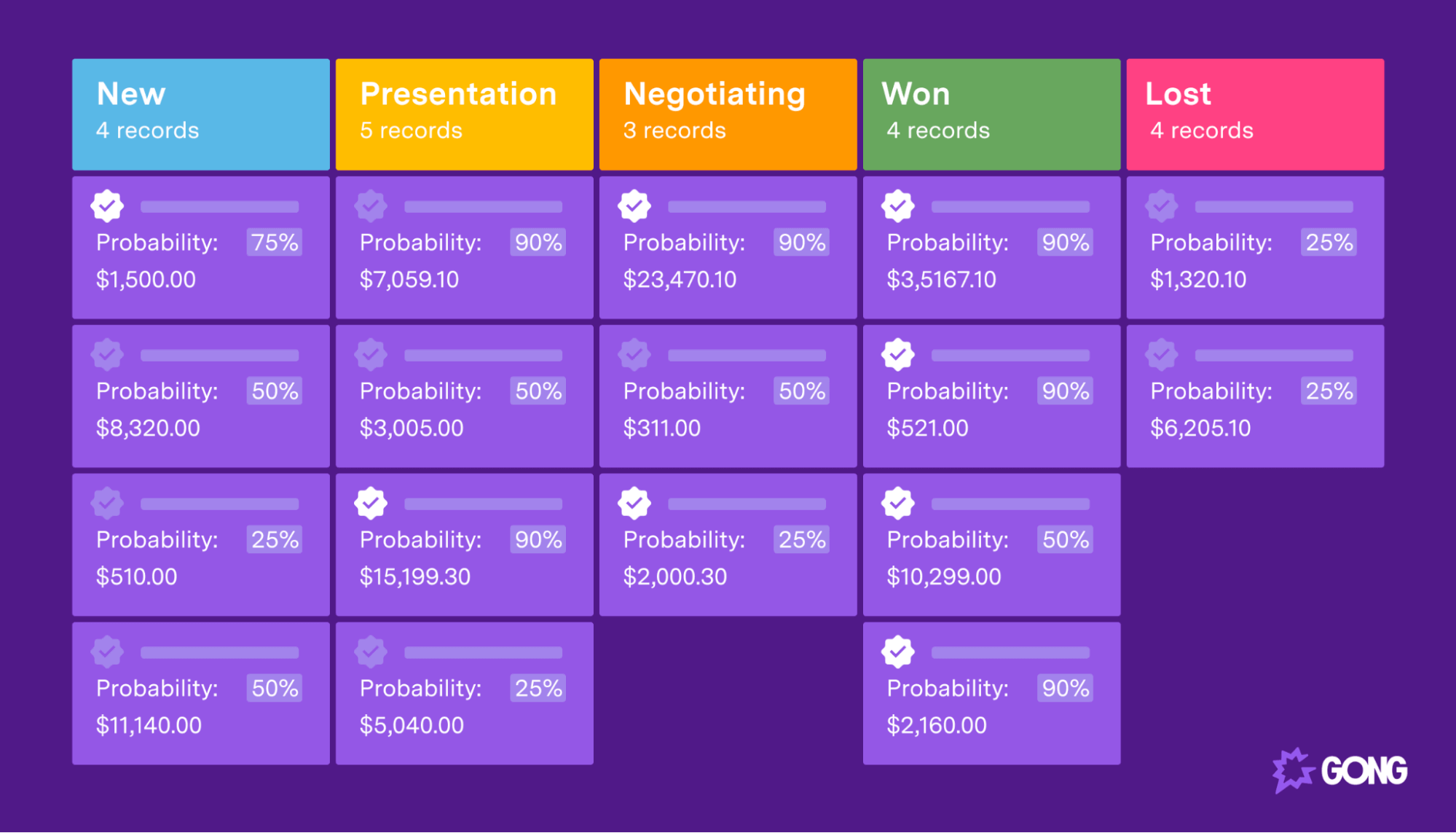
Rather than using a sales forecasting method that relies on historical data, we’d recommend using one based on your sales cycle or opportunity stage probability to assess the potential of territories going forward.
Use software
Sales territory mapping software isn’t just effective for creating sales territories — you can also use it for sales territory management and to optimize each territory moving forward.
Most platforms offer functionality like real-time insights that make it easy to identify and correct issues before they start impacting sales or team morale. And if those issues require territories to be realigned, you can do this easily using sales territory mapping software.
While a sales territory mapping tool is useful for the ongoing management and optimization of sales territories, a revenue management platform like Gong can help you track the health of your pipeline and drill down into sales performance by rep and account type.
Optimize your sales territories with Gong
It’s not difficult to divide your buyer base into different sales territories. What’s hard is keeping those territories fair years after they were created. An effective sales territory mapping strategy is as much about ongoing optimization as it is about the initial creation.
That’s where a sales automation tool like Gong comes in.
With Gong, you can keep an eye on how your sales reps perform in each territory. You can also use our software to track each market’s performance, identify issues, and optimize them as needed. Book a demo today to find out more.